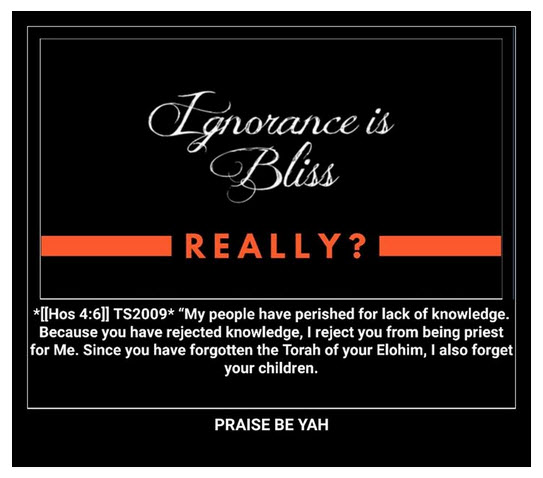The Hiding of The Lunar Sabbath
The Hiding of the Lunar Sabbath
The Experience of the Seventh-day Adventist Church
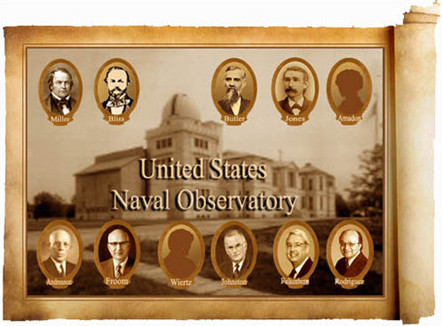
Is Saturday the true Biblical Sabbath? Did our Messiah’s Crucifixion occur on Friday, Abib A.D. 31? Was October 22, 1844, the date of the Second Coming and/or marking the commencement of the Investigative Judgment?
Discover in this article the other side of the story that has been well hidden from the modern S.D.A. Church members, and Sunday keepers for that matter. The purpose of this is so you may make an informed decision. Discover the pivotal truth our Eternal Father has repeatedly tried to restore to the world. This is a truth the S.D.A. Church has time after time rejected because it exposes an irreconcilable conflict between their three pivotal doctrines, two of which are carried over from the Millerite Movement of the 1840s. Strikingly, these are based upon the tenets of three opposing calendars: 1) The date of the Crucifixion; 2) The Saturday Sabbath; 3) October 22, 1844, the Day of Atonement.
The problem: 1) The true day of the Crucifixion in A.D. 31 was based upon the Scriptural full moon as the New Moon and its corresponding lunar months and lunar weeks; 2) Saturday, as the seventh-day Sabbath, was ignorantly based upon the modern Jews’ erroneous tradition, who when in Roman captivity were pressured to adopt the Roman calendar with its ever cycling week utterly divorced from the lunar phases that were ordained at creation; and 3) The Day of Atonement of October 22, 1844, was wholly based upon the Orthodox Karaite Jews’ crescent New Moon tradition and not the Scriptural narrative in Luke that identifies the full moon as the New Moon. Luke records that “the sun was darkened from the sixth to the ninth hour,” a reference to a solar eclipse on the day of our Messiah’s Crucifixion. 4) Stunningly, October 22, 1844, is entirely based upon tenants of a New Moon and lunar calendation, as it was the 10th day counted from the New Moon of the Seventh Lunar Month. No one ever hears a sermon on this New Moon connection. The Roman week that cycles without end can never be harmonized with a lunar month. This creates a paradox that cannot be resolved except in the minds of folks who are ignorant of how October 22, 1844, was reckoned for that year.
Today, the Karaite Jews, from which the Seventh-day Adventist Church adopted their crescent New Moon for October 22, 1844, honestly have admitted they don’t even know when the true Seventh-day Sabbath actually occurs anymore. The pragmatically honest Karaite Jews deserve accolades for this admission:
“Through all the trials and tribulations that humanity has experienced over the past 5,000 years, we have no proof whatsoever that our current Saturday is the actual seven-day “anniversary” of the original Shabbath of Creation.”
Compound this with a fact not generally discussed in Adventist circles regarding Sir Isaac Newton’s discovery of a calendar conflict as early as the 17th century. For he found that the “Sunday” of Rome’s continuous weekly cycle could NOT be harmonized with the date of the resurrection in A.D. 31, on the Hebrew astro-luni-solar calendar. This was the hallmark reason the Papacy, along with most Protestant churches today, recognize A.D. 33 as the year of the cross. For this reason, the Pope simply moved the date of the resurrection from A.D. 31 to A.D. 33, so Sunday would align with the 16th of Aviv, Resurrection Day, of the astro-luni-solar calendar.
Make no mistake, if “Sunday” could not be reconciled to the resurrection date in A.D. 31, the 16th of Aviv (Scriptural astro-luni-solar calendar), then might it likewise be true that “Saturday” could not be harmonized with the 15th of Aviv, the day S.D.A.’s believe the Messiah rested in the tomb on the Sabbath? The answer is a resounding YES!
The following article contains valuable information important for all who love the Creator of the Sabbath as our Redeemer. We have been counseled to be as proactive as the Bereans, first by hearing and then by searching the Scriptures to see if these things are true. Please take a moment to commence with the hearing/reading and then follow it by searching the Word of Yahuah.
“Not everyone who says to Me, ‘Yahuah, Yahuah,’ shall enter the kingdom of heaven, but he who does the will of My Father in heaven. Many will say to Me in that day, ‘Yahuah, Yahuah, have we not prophesied in Your name, cast out demons in Your name, and done many wonders in Your name?’ “And then I will declare to them, ‘I never knew you; depart from Me, you who practice lawlessness!’ Matthew 7:21-23 NKJV
These disheartening words will yield life’s greatest regret. Yet, they will be spoken to all those who have refused first to listen and then to obey the voice of our Eternal Father when it was inconvenient and when it contrasted too greatly with the voices of long-cherished church leaders and the traditions of men. Being sincere in your current beliefs is simply not enough. We are to continually advance in our knowledge of truth if we are seeking to “follow the Lamb whithersoever He goes.” Because the reformation will continue until His return, likewise, the Most High continues to call His obedient followers out of Babylon, the mixture of truth with error. Therefore, it is not safe to rely upon the light given to our forefathers, as we have been given still greater light to prepare us for the times soon to come and fit us for an eternity with Him.
Thus, there is no excuse for believing only what the churches taught one hundred or one thousand years ago. For if our trustworthy forefathers had received the light we have, they would have embraced it. Likewise, the remnant who are cut from the same cloth today can do no other.
Disclaimer: Please note that the following article is based on the premise that the crescent moon is the New Moon, whereas this website only recognizes the full moon as the true Scriptural New Moon. For more on the reason for this change, please refer to the article: Announcing an Official Paradigm Shift.
Kerrie French
www.TheCreatorsCalendar.com

By www.BibleTruthers.org
|
Dr. Jacques Doukhan, Professor of Hebrew and Old Testament Exegesis at Andrews University, was the featured speaker at the Worker’s Meeting for the Upper Columbia Conference of Seventh-day Adventists in August of 2 According to three people in attendance, a number of pastors voiced questions about the Biblical calendar. One of the pastors stated that at that time, Doukhan acknowledged that when the Biblical calendar calculates the Sabbath, it will fall differently. If the Sabbath on the Biblical calendar does not fall on Saturday, why does the Seventh-day Adventist Church still teach that Saturday is the Sabbath? Why has the leadership not informed the church members? How long has the leadership known that Saturday is not the true Bible Sabbath? |
The history of the lunar Sabbath teaching within the Seventh-day Adventist Church is the sad story of a cover-up spanning decades. Heaven has tried many times to bring this truth to the world, but each time spiritual pride or fear of the consequences of accepting such a radically different truth has led the Church to reject it and, still more, to cover up the evidence in support of this truth.
In the mid-1990s, questions arising out of California and Washington regarding the concept of the lunar Sabbath and the 1844 Day of Atonement prompted the General Conference of Seventh-day Adventists (GC) to take action. In 1995, an order originating from the office of the then General Conference president, Robert Folkenberg, Sr., commissioned a study group to ascertain how the Day of Atonement was determined in 1844 as well as resolve the effect such calculation might have on the seventh-day Sabbath. More on this subject in the article, When Two Calendars Collide.
The committee m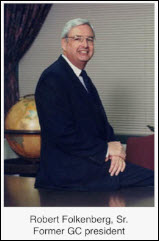 embers consisted of five scholars hand-picked from the seminary at Andrews University. In addition to these five, there was also a representative from the Ministerial Department of the North American Division (NAD) of Seventh-day Adventists and another representative from the Ministerial Department of the General Conference. Robert M. Johnston, professor of New Testament and Christian Origins at the seminary, was selected to head this research committee. No representative from the Biblical Research Institute was on the committee as it was felt that the well-respected scholarship of the various members was of sufficient authority that it was not needed.
embers consisted of five scholars hand-picked from the seminary at Andrews University. In addition to these five, there was also a representative from the Ministerial Department of the North American Division (NAD) of Seventh-day Adventists and another representative from the Ministerial Department of the General Conference. Robert M. Johnston, professor of New Testament and Christian Origins at the seminary, was selected to head this research committee. No representative from the Biblical Research Institute was on the committee as it was felt that the well-respected scholarship of the various members was of sufficient authority that it was not needed.
The vaults were thrown open for the committee. They were asked to research the Grace Amadon Collection (housed at the Center for Adventist Research at Andrews University) as well as the four-volume series, The Prophetic Faith of Our Fathers, by Leroy Edwin Froom. Additional material supplied to the committee for this study was a series of letters written by a well-respected Adventist scholar, M. L. Andreasen. A research paper on the subject by Elder J. H. Wierts was to be provided, but before it could be studied, something unexpected happened.
It had been expected that the committee would be able to very quickly refute the idea of the Sabbath being calculated by the ancient Hebrew luni-solar calendar. However, that is not what happened. As the committee members began thoroughly studying the subject of the Biblical calendar used for calculating the Day of Atonement in 1844 and the facts of the crucifixion date, several of them became convicted of obvious inconsistencies revealing that Saturday is not the Bible Sabbath.
Anytime you have October 22 and it is your hallmark doctrine, it is the hallmark doctrine that sets your denomination apart as distinct and separate from all other denominations, and it is based on Jewish lunar calculation, and then you give people the idea that you got it from the solar calendar, you’re lying! Several of us were very, very hard on them.
When asked if the church officials who appointed the committee, in their ignorance of the topic, actually thought that the Study Committee could refute the lunar Sabbath, he replied:
In their ignorance, they actually thought they had a committee that would rubber stamp whatever they were told to agree to. But after a few meetings they saw that they couldn’t get a consensus from us, they couldn’t bully us, and they shut it down. They saw that they were about to open Pandora’s box and so they shut it down.
The committee members who did not feel comfortable speaking up in support of an open admission of the calendar used to establish October 22 as the Day of Atonement in 1844 nevertheless saw the truth of what the others were saying. One of them admitted to another, I see what you are saying, and I agree with you. When asked why, then, he had not spoken up in the committee, he replied:
“Art thou he that troubleth Israel?” If I am viewed as a liberal, I will lose everything. The fastest way to destroy your career in the SDA Church is to be branded a liberal scholar. If I come out and agree with you, my career will be over. I’ll lose my job. I’ll lose everything. Once you’re labeled a liberal in the Adventist Church, you’re dead.
As far back as April, and then in June and December of 1843, and in February of 1844 months before [William] Miller’s original date expired for the ending of the Jewish year 1843 at the time of the vernal [spring] equinox in 1844 his associates (Sylvester Bliss, Josiah Litch, Joshua V. Himes, Nathaniel Southard, Apollos Hale, Nathan Whiting, and others) came to a definite conclusion. This was that the solution of Daniel’s prophecy is dependent upon the ancient or original Jewish form of luni-solar time, and not upon the altered modern rabbinical Jewish calendar. . . . They therefore began to shift from Miller’s original date for the ending of the 2300 years (at the equinox in March, over to the new moon of April, 1844. (Leroy E. Froom, The Prophetic Faith of Our Fathers, Vol. 4, p. 796.)
There were many in 1844 who made merry over a lunar reckoning that was not based upon the modern Jewish calendar. The answer was returned: Every scholar knows that we are correct as to the Karaite [original Hebrew] seventh month. The Millerites were well aware of the rabbinical seventh month in September in 1844, and the circumstance was often mentioned in their papers. At the same time they were emphatic in their challenge that they dissented from the modern Jewish calendar because it did not agree with the laws of Moses.
Painstakingly studying the Karaite [Jewish] protest in the Middle Ages against the Rabbinical perversion of the calendar, they at last deliberately and irrevocably accepted, restored, and applied to their time-prophecy problem, the earlier calendation championed by the Karaites. And this they did in defiance of the whole body of Rabbinical scholarship and the general current practice of Jewry which change was introduced in the same century and at approximately the same time that the Roman Church . . . changed the Sabbath by church law from the seventh to the first day of the week.
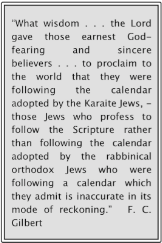 they were able to calculate, in advance, the Day of Atonement. Without this understanding, there would have been no Seventh-Month Movement, no Midnight Cry, and, later, no cleansing of the sanctuary doctrine within Adventism. It is not too strong a statement to say that without the luni-solar calendar, there would be no 2300-day doctrine within the Seventh-day Adventist Church. The problem is when the original Biblical calendar calculates the Sabbath, it does not routinely fall on Saturday because the weekly cycle of the luni-solar calendar does not align with the weekly cycle of the Gregorian calendar, which is a solar calendar. Furthermore, this can be proven by the fact that if the 2300 day/year time period started in 457 BC, as taught by both the Millerites and the SDA Church, the year AD 31 is pinpointed
they were able to calculate, in advance, the Day of Atonement. Without this understanding, there would have been no Seventh-Month Movement, no Midnight Cry, and, later, no cleansing of the sanctuary doctrine within Adventism. It is not too strong a statement to say that without the luni-solar calendar, there would be no 2300-day doctrine within the Seventh-day Adventist Church. The problem is when the original Biblical calendar calculates the Sabbath, it does not routinely fall on Saturday because the weekly cycle of the luni-solar calendar does not align with the weekly cycle of the Gregorian calendar, which is a solar calendar. Furthermore, this can be proven by the fact that if the 2300 day/year time period started in 457 BC, as taught by both the Millerites and the SDA Church, the year AD 31 is pinpointed 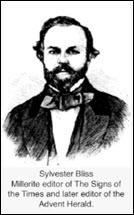 as the year of the crucifixion. When the luni-solar calendar for AD 31 is overlaid with the Julian calendar for the same year, Passover, the sixth day of the week, does not fall on Friday! (For further discussion of this point, please see Problem of the Crucifixion Date.)
as the year of the crucifixion. When the luni-solar calendar for AD 31 is overlaid with the Julian calendar for the same year, Passover, the sixth day of the week, does not fall on Friday! (For further discussion of this point, please see Problem of the Crucifixion Date.)Time is measured by motion. The swing of a clock pendulum marks seconds. The revolutions of the earth mark days and years. The earliest measure of time is the day. Its duration is strikingly indicated by the marked contrast and succession of light and darkness. Being a natural division of time, it is very simple, and is convenient for the chronology of events within a limited period.The week, another primeval measure, is not a natural measure of time, as some astronomers and chronologers have supposed indicated by the phases or quarters of the moon. It was originated by divine appointment at the creation, six days of labor and one of rest being wisely appointed for man’s physical and spiritual well-being.
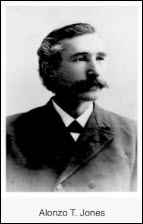 Galatians 4 was the moral law (and thus still binding), and not the ceremonial law believed nailed to the cross. The leading brethren did not want to accept that anything beyond the 10 Commandments was still binding from the Law of Moses. If such were to be acknowledged, consistency demanded that the feasts of Leviticus 23 were still binding as well.
Galatians 4 was the moral law (and thus still binding), and not the ceremonial law believed nailed to the cross. The leading brethren did not want to accept that anything beyond the 10 Commandments was still binding from the Law of Moses. If such were to be acknowledged, consistency demanded that the feasts of Leviticus 23 were still binding as well. Dear Brother Holmes, My answer to your letter of inquiry of April 12 has been delayed by many things. And now I do not think that I can do justice to it in the time that I have. That Minneapolis meeting and conference embraced much more and meant much more than what occurred in the meeting and conference. In a way it was the culmination of a number of things before it, and it was also the origin of a lot of things after it.. . . In that meeting and conference the tide of things was indicated by what one of the Battle Creek leaders said one day to a cluster of men after one of Bro. Waggoner’s studies. He said, “Now we could say Amen to all of that if that is all there were to it. But away down yonder there is still something to come. And this is to lead us to that. And if we say Amen to this we will have to say Amen to that and then we are caught.“
Thus they would not say Amen to what they knew was true for fear of what was to come after, to which they would not say Amen anyhow and which never came either, for there was no such thing, and so they robbed themselves of what their own hearts told them was the truth; and by fighting what they only imagined, they fastened themselves in opposition to what they knew that they should have said Amen to.The opposers were [General Conference President] Geo. I. Butler, J. H. Morrison, and all who could be swung by General Conference influence. For more information, please see Exposing the Skeleton in the S.D.A. Closet of 1888.
Around this same time, A. T. Jones wrote a scathing rebuttal of the concept as presented by a Sunday-keeping minister. Unfortunately, his response was more of an impassioned attack rather than a well-reasoned, logical refutation addressing the various evidence supporting the concept. To the author’s knowledge, there is no evidence that Ellen White was involved in any discussion of the topic or even aware of it.
- Acknowledgment that the crucifixion occurred on the Passover, the sixth day of the week and the 14th day of the lunar month. (See Great Controversy, p. 399.)
- Confirmation that the Passover was observed nationally the night the Saviour lay at rest in Joseph’s tomb. (See Desire of Ages, p. 775.)
- Recognition of the latter rain link to the spring barley harvest beginning of the year. (Refer to: From Trials to Triumph, p. 30.)
(It is true that there are some references in her writings to Friday and Saturday, but such terminology cannot be found in Scripture. Furthermore, it is a historically documented fact that the seven-day planetary week in use today did not enter the Julian calendar until after the death of the Messiah.)
In contact with Jewish Rabbis my Hebrew Teachers, I discovered many years ago from their Hebrew records that the Rabbinical Jewish Day of Atonement in 1844 fell on Monday, September 23. I then determined to make a careful investigation on this important point.Because of my acquaintance [sic.] with Dr. Eichelberger at the U. S. Naval Observatory, Washington, D.C. I had access to any astronomical record at the Observatory. By those astronomical records I discovered and worked out the Biblical, Chronological, Calendrical, astronomical facts relative to 457 B.C., 27 A.D., 31 A.D. and October 22, 1844, A.D. and found that all that important data in Great Controversy was correct even to the day.
To authorize E. D. Dick to confer with M. E. Kern and bring to the officers the suggestion of a committee for a conference with J. H. Wierts regarding the position of the denomination in respect to the date October 22, 1844 and the day of the crucifixion. (Council of GC Officers with J. H. Wierts, Officers Meeting, Nov. 1, 1938, emphasis supplied.)
In reporting on their initial research to the GC officers, Dr. Froom stated that as chairman of the committee he wanted to present certain problems they had met on which they desired counsel. The contention has been raised by some of our detractors that the Jews celebrated the Day of Atonement on September 23, of the year 1844, and that the denomination therefore had the date wrong. It has been proven, however, that September 23 was celebrated only by the Rabbinical Jews, but that the Orthodox Karaite Jews held to the correct date and had to this day. We must ascertain the reasons back of the choosing of October 22, 1844, which we have followed all these years. Some of our men also seem not to be sure of the date on which the crucifixion occurred . . . . (Minutes, Officers Meeting, December 18, 1939, emphasis supplied.)
The result of this initial report had far-reaching consequences, and a new member was added to the committee:
Brother Froom stated further that we needed astronomical and chronological data to establish these dates beyond question . . . They also are united in the judgment that Miss Grace Amadon who has studied the astronomical aspects of these dates for a number of years, contacted astronomers and astronomical authorities to considerable extent, could offer the committee some real assistance if she could be present here in person and study the matter through with them under their guidance . . .L. E. Froom stated that Grace Amadon has done enough work on the astronomical aspects of October 22, 1844, to be of value to the committee, that if she comes she would work under supervision to assist the special group of the committee dealing with that particular phase of the study. We might need her for four or five weeks and she might do some things that the members of the committee are not qualified to do. (Ibid.)
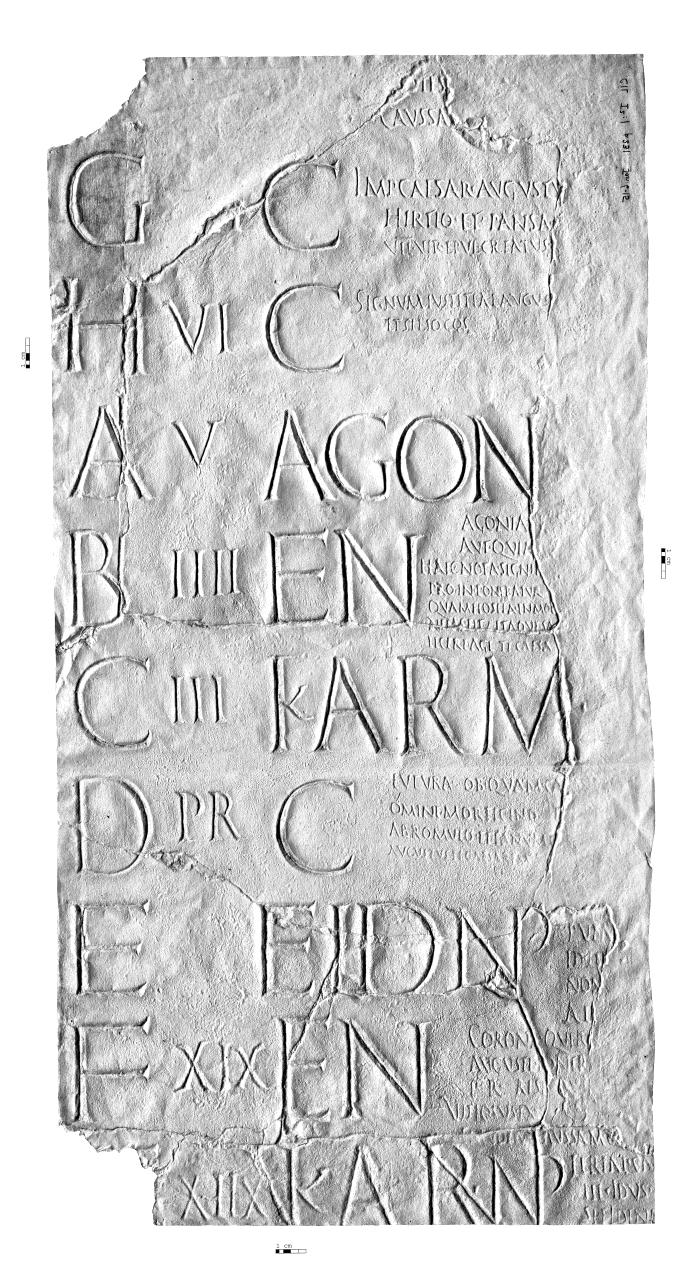
Though William Miller fixed the date as 1844 he still put the cross at the end instead of the middle of the prophetic week. We have never gone to the bottom of the matter. Our task now is a major one of showing why we insist on the 70 years and the 2300 years beginning at the same time. Some of the old writers confirm the beginning of 457 BC but do not define the midst of the week. . . . L. E. Froom stated that we could easily supply facts on what was done in 1844, but we must get the facts back of what led to the choice of the date October 22, 1844. It is the same with the date of the crucifixion. (Minutes, Officers Meeting, December 18, 1939, emphasis supplied.)
M. L. Andreasen stated that he had been asked certain questions in his classes as far back as 1924 and after a little test learned that not half of the students believed in the cleansing of the sanctuary. He thought they had not quite understood and could not believe because of the limit of their understanding. If that represents a cross section of our ministry we do not have a ministry that is profoundly convinced of the truths for which we stand. He feared that our detractors have made more inroads into our ranks than we think and that more research needs to be done to establish our doctrine. When men know they can talk it out they are more easily convinced, but he has been surprised by some saying they did not dare talk out what is in their minds.. . . Unless we give proofs to our workers we shall have a weak ministry giving the trumpet an uncertain sound. He [C. H. Watson] would like to see this committee prepare matter to answer L. R. Conradi and A. F. Ballenger on October 22, 1844. Is it not time to meet the situation? Some of our ministers are troubled because we do not make any answer and think that we are not able to answer them. (Ibid., emphasis supplied.)

It would not be easy to explain to the people that the God, who advocated and instituted such an arrangement, would be very concerned about the exact seventh day.If an explanation were possible, and the people were at last adjusted to the shift in the feast day and the stability of the seventh day, it might be supposed that in time they would get used to the arrangement. But they would no sooner have become accustomed to this, till another shift is made. Now they shift back to where they were before.But neither is this settled or stationary. Another shift comes, and another and another. Now Denver observes the day before Omaha does, then it observes the same day. Now Omaha and Chicago observe the same day, but at another time a different day. There is no uniformity, and just as the people get used to a certain arrangement the day is changed again. Such is more than the common people can understand, and if we go to the people now with such a proposition, we must expect that confusion will result. And our enemies will not be slow to point out the difficulties and ring the changes on them.
If in the new calendar scheme we are considering adopting it should be admitted that local communities have the right of making their own observations that would determine the New Year, it would yet remain a question if the proper men competent for such observation would be available. . . . Let not the people observing God’s holy day sponsor a calendar that means confusion, and make our work unnecessarily hard. For while the proposed scheme does not in any way affect the succession of the days of the week, and hence does not affect the Sabbath, nevertheless if the people observing the Sabbath also advocate the new scheme of calendation, the resulting confusion will not be of any help to us.. . . While the whole matter would ultimately become adjusted, it would certainly make for confusion. Seventh-day Adventists will soon have enough matters on their hands so that it will not be necessary to make trouble for ourselves before the time. The blank day may yet confront us. We cannot afford to start trouble of our own. To the world it will look that the present proposed calendar is advanced for a specific purpose not for the purpose of adoption, for we will find that it is impossible of universal application not for the purpose of supporting the 1844 date. I do not believe that we are under that necessity. It must be possible to establish October 22, 1844, without resorting to such devices.
It is not speculation to state that Andreasen rejected the Biblical calendar for fear of the consequences. He stated as much himself:
The committee has done a most excellent piece of work. The endorsing, unreservedly, of the plan now before us seems to me, appears in its implications so loaded with dynamite, with TNT, that we might well beware. I would most earnestly warn the committee in this matter. I am afraid that the repercussions of such endorsement at this time will be felt in wide circles.23
Andreasen’s proposed solution to the situation is a heart-breaking example of political expediency taking precedence over truth:
A possible solution: I suggest that we make a report to [GC President] Brother McElhaney of what the Millerites believed and how they arrived at their conclusions, without, at this time, committing ourselves upon the correctness of their method. Let Brother McElhaney publish this report in any way it may be thought best, and let us await the reaction. This, of course, would be only a preliminary report, and would be so designated. We will soon [see] what fire it will draw. In the mean time let us study further on the final report. The reaction to the preliminary report may determine the form of the final report.24
 In other words, Andreasen was urging, let us focus on how the Millerites established October 22, rather than September 23, as the Day of Atonement for 1844, but let us not come right out and admit that we agree with how they established it. Let us test the waters, and depending upon the reaction to our test, we can know whether or not we wish to say more.
In other words, Andreasen was urging, let us focus on how the Millerites established October 22, rather than September 23, as the Day of Atonement for 1844, but let us not come right out and admit that we agree with how they established it. Let us test the waters, and depending upon the reaction to our test, we can know whether or not we wish to say more.A committee that was appointed to do certain research work presented a statement concerning their extensive report which is now ready. It was felt that this report should be presented to as representative a group as possible, and it was therefore VOTED, To set July 9 and 10, beginning at 9 A.M., July 9, as the time for hearing the report in order that the union conference presidents, who will be in attendance at the General Conference Committee meeting in New York City just preceding this date, may be present; and further, that the officers be asked to invite any others they may think advisable, to be present when the report is given.
At this meeting were present all the General Conference members available, all the Union Presidents in the U.S., many Bible teachers, many Ministers and many others. The reading of the R.C.’s [Research Committee’s] Report started at 9:30 A.M. and the meeting ended about 10:00 P.M.
Political expediency was the theme of the day, and the full effect of the Biblical calendar upon long-held assumptions of the church was covered up as The Report of Committee on Historical Basis, Involvements, and Validity of October 22, 1844, position was presented. J. H. Wierts was heart-sick. Different members of the Research Committee had written different sections of the six-part report. Wierts was most upset with one of the sections written by Grace Amadon, Part V. This section entitled, Crucifixion Date, and Astronomical Soundness of October 22, not only twisted facts in order to force a Friday crucifixion, but it did not address the points he had raised from the very beginning! Intellectual honesty compelled him, in the end, to stand and, in front of the gathered assembly, denounce it for its skewed and inaccurate treatment of historical and astronomical facts.
The injustice done truth under the charismatic influence of Grace Amadon was recalled by Wierts several years later when he wrote L. E. Froom after receiving notice of her death. This letter is worth quoting extensively because it provides an insight into the machinations done by the Research Committee to deny the impact of luni-solar calendation on the seventh-day Sabbath.
However, I feel constrained to make a few observations. My first observation is this, (a) You say, because of her brilliance she won the admiration of her associates (the R. C. [Research Committee]). It would have been more true, if you had said, because of her brilliance her associates (the R. C.) allowed itself to be put under an Amadonian spell, from which after almost seven long years, her associates (the R. C.) has not as yet completely recovered, as Elder Froom’s writings about Miss Amadon plainly show.
Amadon made extensive claims that the United States Naval Observatory supported her claims based on astronomical information she had obtained from their records and calculations. Wierts revealed such claims to be misleading at best and duplicitous at worst:
My second observation: Your statement about the support of the Associate Astronomer of the U. S. Naval Observatory (Mr. Glen Draper) that he checked and affirmed her work.Well, Brother Froom, perhaps you don’t know, therefore I feel it my duty to reveal a few things to you, for your own good and others.Of course it is true what you say that Miss Amadon had made frequent contact with Mr. Draper. Yes, even to the extent that Miss Amadon was officially forbidden entrance to the observatory library.
The man, or group of men who are supporting Miss Amadon must be a group of men without brains. And the next statement was: Uncle Sam [the U.S. Government] needs workers, Miss Amadon should be wrapping packages for him. At the Congressional library Miss Amadon made the claim that she was connected with the observatory. If you want more details about this, just let me know, I will furnish them.
One of our teachers is in receipt of a letter which concerns a statement made by Miss Grace Amadon to the committee on chronology, of which she was a member. She stated that she had your endorsement on some of her computations, but did not specify. The question is: assuming that you gave an endorsement, did this concern or include her position that the Jewish Passover in the year 31 A.D. fell on a Friday? As she is now deceased, we would appreciate a word from you.
But as I told her so frequently there may be some question in accepting the premises as real. They are interesting and furnish as consistent a set of conclusions as any I have seen on the subject, although they seem to contain several precepts of almost hearsay. They are novel to say the least.
In other words, Draper was explaining that Amadon made some assumptions. If one accepts her assumptions as correct, her conclusions are consistent with her assumptions.
Rebok was not entirely satisfied with Draper’s response and wrote again, asking:
I wonder if you would be willing to offer your comments or counsel regarding the premises upon which Miss Grace Amadon based her work, or if you would feel free to give us the facts so far as science and mathematics know them concerning the Passover day in the year 31, as well as the other years which are now considered by various groups studying the problem.
Draper was pressed for time and not interested in a lengthy discussion. He replied curtly:
I am a little perturbed to know exactly what you desire as Miss Amadon’s work must certainly be in your possession and states for itself what it is. Briefly though it assumes that the Paschal moon is the important moon and not the new moon.Her calendar is refreshing in its (at present) novel premise that the Jews knew enough of the motions of the moon to predict the time at which the moon would be full. The Paschal feast should never arrive before the full moon is her major premise. I have never heard of any other modern who claims this, but it was indeed interesting to me to see how she was able to make a consistent chronology on that premise.
It appears in many respects to be the most consistent chronology I have seen, although it requires the difficult assumption that the priests knew a great deal more of the laws of motion of the moon than they recorded as such. Miss Amadon . . . had faith that the priests were able to regulate the entire year by observations of the new moons of a previous year. It is difficult to understand now how they were able to do this as we have only in the last three hundred years been able to reproduce this feat.
Well, Brother Froom, the question is, what did Mr. Draper check and endorse? Answer 1. Mr. Draper in the capacity of an astronomer checked and endorsed the following calendrical, astronomical facts.
- Mr. Draper in his astronomical capacity did NOT affirm that the moon’s conjunction of Tuesday, April 10d 14h 31m was the new moon that determined the Biblical Nisan 1, 4032 A.M.
- Mr. Draper in his astronomical capacity did NOT affirm that the new moon’s translation period of 3d 3h 33m determined the biblical Nisan 1 . . . to fall on Saturday, April 14, in 31 A.D.
- Mr. Draper in his astronomical capacity did NOT affirm that the full moon of Wednesday . . . was the full moon that determined the Biblical Passover for 31 A.D.
- Mr. Draper in his astronomical capacity did NOT affirm that the unaccountable darkness of the sun occurred on Friday, April 27, 31 A.D.36
Experience during the course of many years with several astronomers at the U. S. Naval Observatory . . . including two of the directing astronomers has shown that they are always willing, and even pleased to assist in the finding of calendrical astronomical facts and data. But they simply refuse, and will not interpret, neither affirm or deny Biblical, chronological event data in the light of astronomical facts.
Wierts clearly summed up the ramifications of this lack ir jordan 3 whataburger custom of claimed USNO support:
Therefore, Brother Froom, please observe and understand that Mr. Draper’s checking of Miss Amadon’s supposed Crucifixion data claims is of NO value whatsoever in the establishment of Biblical events, neither does Mr. Draper’s checking prove that Friday, April 27, 31 A.D. is the day and the date of the crucifixion.Therefore, the so-called checking and affirming of Mr. Draper’s above calendrical, astronomical facts is of no value whatsoever in the solution of our problem.
Furthermore, Brother Froom, do you know that Miss Amadon’s claim for the crucifixion day and date of Friday, April 27, 31 A.D. is only ASSERTION without proof whatsoever.
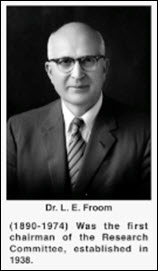 Seventh-day Adventists have always taught that the 2300-day prophecy of Daniel 8 and the 70-week prophecy (pointing to the Messiah) of Daniel 9 began at the same point in time: 457 BC. In order to support Daniel’s 2300-day/year prophecy ending on October 22, 1844, Grace Amadon and the committee were left with one year and one year only for the crucifixion: AD 31. The problem was that AD 31 provides incontrovertible proof that the modern weekly cycle differs from the Biblical weekly cycle because Passover on Abib 14 that year does not fall on Friday.
Seventh-day Adventists have always taught that the 2300-day prophecy of Daniel 8 and the 70-week prophecy (pointing to the Messiah) of Daniel 9 began at the same point in time: 457 BC. In order to support Daniel’s 2300-day/year prophecy ending on October 22, 1844, Grace Amadon and the committee were left with one year and one year only for the crucifixion: AD 31. The problem was that AD 31 provides incontrovertible proof that the modern weekly cycle differs from the Biblical weekly cycle because Passover on Abib 14 that year does not fall on Friday.
This was a big problem because if the crucifixion did not occur on Friday, then the next day, Sabbath, did not fall on Saturday. IN ORDER TO HAVE A SATURDAY SABBATH, AMADON HAD TO FORCE A FRIDAY CRUCIFIXION AT ALL COSTS! She did this by stretching out the moon’s translation period to a ridiculous length and by insisting, historical and astronomical evidence to the contrary, that the paschal full moon always fell on Abib 13. It was skillful juggling of the data, stretching it to the breaking point, but Wierts let Froom know in no uncertain terms that Draper, as a USNO astronomer, had confirmed only astronomical facts. He did not confirm those manipulations of the data that provided a Friday crucifixion.
Thus, Brother Froom, by these calendrical, astronomical demonstrated facts, it can plainly be seen that Miss Amadon’s claim for the crucifixion on Friday, April 27, 31 A. D. is only assertion, without the least Biblical, prophetical, chronological, typical, calendrical, astronomical scientific proof. And without such we would have no more proof than all those other theorists have for their claims.
Why then did she resort to such deceitful, misleading trickery? Answer (a) Miss Amadon in all her work in the Research Committee’s Report No. 1, Part V has made the erroneous claim over and over again that the Passover moon must always become full on Nisan 13, but never on Nisan 14 [this, in order to force a Friday crucifixion]. (b) Therefore, if she had allowed her supposed Nisan 1 to fall on April 1 where the Rabbinical Jews had it, then of course, her supposed Passover-day Nisan 14, would have fallen on April 14, on the day of the full moon. . . . Therefore, if her supposed Passover-day, her Nisan 14, had fallen on April 14, on the day when the moon had become full, she would have contradicted all her erroneous claims put forth in her Part V of the Research Committee’s Report No. 1.. . . It is therefore obvious that she rather resorted to deceitful calendar data juggling than to truth.. . . Therefore, in order to save her erroneous claims from complete disaster, she rather stooped to the misinterpreting, misleading, deceitful calendar day and data juggling, perhaps thinking and hoping to get away with it. Because as can be shown and proven that she got away with so many other erroneous things in the presence of the Research Committee. Therefore, it can be presumed that she hoped that she also would get away with this. Perhaps she may not have thought that this problem is the same as any mathematical problem which at any time may be investigated to ascertain if the conclusions drawn are right or wrong. If right they will stand, but if wrong they will fall.
Wiert’s letter, as blunt and pointed as it was, was an anguished cry for the truth to triumph. He ends his letter by appealing for an honest, unbiased study of the subject:
If . . . the General Conference officials would ever allow a careful investigation to be made along all those above lines, it would be proven, established and demonstrated, that Miss Amadon was a very brilliant, willful, deceptive, misleading calendar data juggler. And it would be proven and established and demonstrated that all her expensive work during those seven long years has not served to construct, but to destruct the data of our message.However, the blame for all this confusion and misunderstanding rests on the shoulders of the Research Committee, and especially м — цена 600 грн в каталоге Спортивные штаны ✓ Купить женские вещи по доступной цене на Шафе , Nike, спортивные штаны, Украина #149859201, preview nike blazer low speed yellow on you, Brother Froom, as Chairman of the Research Committee from the fall of 1938 until July 20, 1942. And, furthermore, you as editor of the Ministry are responsible for all that erroneous Amadonian material which you have allowed to appear in the Ministry.One more item: Well, Brother Froom, you remember that Sunday evening meeting on July 9, 1939, in the General Conference chapel, when Miss Amadon had given out that loose sheet, and then expounded its erroneous contents of the 1844 question in the hearing of that important assembly, which she finally climaxed when her supposed BRILLIANCE flashed forth with her foot stamping, declaring in her apparent triumph What More Do You Want!Well, Brother Froom, she almost got away with it that evening. But as I had carefully studied her Part V and knew all the misleading, deceitful tricks and errors in it, and then her boldness to give out that loose sheet with its glaring, deceitful, misleading errors in it. I was then determined to strike her whole misleading, deceitful arguments a paralyzing blow, which I am glad I did at that important meeting, and I am glad to say that from that paralyzing blow Miss Amadon nor her associates (the Research Committee) have never been able to dare to try to extricate her argument on the October 22, 1844 question.
I know, Brother Froom, that these are harsh, unkind, yes, serious statements, but for the sake of the truth, and the great cause that we love more than life itself, and in the hope that the beautiful, prophetic, Messianic data truth may come to light. I challenge you, to challenge me to prove my claims.
In closing, let me say, and for your own information that all the above, and much more has been revealed, and is in the hands of several General, Union and local officials.
Therefore, I am sure, that sooner or later an official investigation of this whole important prophetic data matter will be demanded.
The truth and our message demands that the true prophetic interpretation on all this must come to light, sooner or later. If the stones must cry it out.
 Correspondence preserved in the Grace Amadon Collection reveals the Research Committee and its topic of the study were initially discussed on a fairly wide basis across North America. The expectation was that the committee’s findings would be officially published for the benefit of the church members. After the committee dug into the subject in-depth, however, and realized they did not have a ready answer for what they repeatedly referred to as the problem of the crucifixion date, it appears efforts were made to limit the discussion to a few in the need-to-know scholars.
Correspondence preserved in the Grace Amadon Collection reveals the Research Committee and its topic of the study were initially discussed on a fairly wide basis across North America. The expectation was that the committee’s findings would be officially published for the benefit of the church members. After the committee dug into the subject in-depth, however, and realized they did not have a ready answer for what they repeatedly referred to as the problem of the crucifixion date, it appears efforts were made to limit the discussion to a few in the need-to-know scholars. He was correct. Despite diligent efforts, the document has not surfaced. The following places all deny knowledge of it:
- Center for Adventist Research, Andrews University
- Archives & Statistics Department, General Conference of Seventh-day Adventists
- Ministerial Department of the General Conference of Seventh-day Adventists
- Ministerial Department of the North American Division of Seventh-day Adventists
Some years ago the General Conference of Seventh-day Adventists set up a committee, later called the Historical Research Committee, to study certain problems of historical dating that relate to prophetic periods, and to engage in scientific research where it seemed necessary. One of the problems studied by the committee was the date for the seventh year of Artaxerxes. The evidence secured, as set forth in the following study, furnishes indisputable proof that the date accepted by the early pioneers of the Advent message was accurate from a scientific as well as from a Biblical viewpoint.
The significance of this statement is this: the Committee confirmed 457 BC as the date in which both the 2300-day prophecy (Daniel 8:14) and the 70-week prophecy (Daniel 9:24-27) began. This, in turn, confirmed that the crucifixion occurred in AD 31. As new archeological discoveries made ancient papyri available for study, it had been hoped that there was sufficient information to resolve the problem. However, the confirmation of the 457 BC date and the accompanying confirmation of the crucifixion year dashed those hopes. The persistent problem of the crucifixion date was still unresolved. The closing words of The Chronology acknowledge that full resolution was not yet possible:
These papyri provide most welcome material for a reconstruction of some phases of the Jewish calendar of the pre-Christian era, for which no other source material is available except the meager information the Bible provides. Yet the small number of documents available as witnesses is far too scanty to arrive at unassailable conclusions as to every aspect of their lunar calendar.However, the recent discovery of additional source material on which the foregoing conclusions have been based allows us to entertain reasonable hope that further data will fill the still existing gaps and permit a more complete reconstruction of the ancient Jewish calendar system.
What became of the Committee after this time is unknown since the topic under discussion was not as widely acknowledged as it had been in the early days of 1938/39. If anyone knows, sharing that information would be appreciated. It does not appear that the Biblical Research Institute (BRI) is the modern equivalent of the Historical Research Committee. An inquiry to the BRI denied any connection to or knowledge of the earlier committee. The BRI’s (Biblical Research Institute) website states:
The Biblical Research Institute was established by action of the General Conference Committee in 1975. The historical roots of the institute go back to the Defense Literature Committee (established 1943) and the Committee on the Biblical Study and Research (established 1952).
No further mention of the study of the problem of the crucifixion date and its undeniable impact on the seventh-day Sabbath can be found until the Research Committee of 1995, which was shut down after only a few months when church officials learned the committee members themselves were seeing light in the idea that the Biblical luni-solar calendar should be used for calculating both the crucifixion date and the weekly Sabbath.
The truth may remain buried forever, but when Heaven decides the time has come for the truth to go forth, none can hide it or stop it. Around the time the 1995 Committee was shut down, other voices outside of Adventism began agitating against the subject. In 2006, a Seventh-day Adventist by the name of Laura Lee Vornholt-Jones was told of the theory of a lunar Sabbath. The idea that she may have been worshipping on the wrong day all her life was very upsetting to her. As she had more questions than answers on the subject, she began researching online, trying to get more information on the principles of luni-solar calendation.
Providentially coming across the register of contents for the Grace Amadon Collection, she was stunned to discover that a wealth of knowledge on ancient Hebrew calendation, including such specifics as characteristics of the Mosaic luni-solar calendar, was known within the SDA Church. She told her mother, eLaine Vornholt, of her discovery. The two women, along with two friends, pooled their money and purchased copies of over 300 pages from the Amadon Collection. As the significance of their discovery opened to their understanding, the women became concerned. Should the Church learn of the Collection’s contents and its glaring implications for the seventh-day Sabbath, perhaps it might someday no longer be made available to the public. Over several months, they purchased everything from the Amadon Collection that was copiable, an amount totaling over 3000 pages of documents, charts, and correspondence, including several letters written by William Miller.
Laura Lee recalls, “We did not want to be wrong; the Sabbath is too important. If our understanding was incorrect, we wanted the Church to address the issue and show us our error from Scripture.” She wrote to various pastors and church leaders of her acquaintance asking, “Since the luni-solar calendar was used for determining Adventism’s most distinctive doctrine October 22, 1844, why are we not using the same calendar for determining the weekly Sabbath?”
The few responses she received did not answer the question. One pastor suggested she contact his non-Adventist, Messianic Jewish brother-in-law and ask him. James Rafferty of Light Bearers Ministry asked her to tell him when she found out.
Receiving no answers from the pastors and leaders they had contacted, the Vornholts quickly became convinced that they had a responsibility to share this information and ask the Church to study the issue. In October of 2007, the Vornholts published the results of their research in a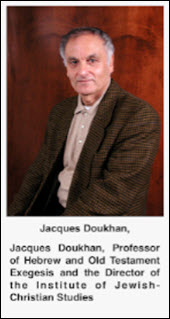 book entitled The Great Calendar Controversy. This book not only explained the principles of luni-solar time-keeping but also presented the Millerite use of luni-solar calendation to establish October 22 as the Day of Atonement in 1844; the problem of the crucifixion date; and the history of the Advent Research Committee of 1938/39.
book entitled The Great Calendar Controversy. This book not only explained the principles of luni-solar time-keeping but also presented the Millerite use of luni-solar calendation to establish October 22 as the Day of Atonement in 1844; the problem of the crucifixion date; and the history of the Advent Research Committee of 1938/39.
Having been told of Jacques Doukhan’s statement to the ministers of the Upper Columbia Conference at Worker’s Meeting the previous August, “When the Biblical calendar calculates the Sabbath, it will fall differently.” eLaine was insistent that the first copies of the book be sent to pastors and church leadership. She explained: We have the council to lay all new light before the brethren. It was very important to me that we did this. We expected that if our understanding was wrong, the Church would respond and show us our error or, if it were correct, that there would be widespread agitation on the subject.
In October, as soon as they received the books from the printers, the Vornholts sent copies of The Great Calendar Controversy to the pastors in the Upper Columbia Conference (where they were members) as well as the various conference officials in the Washington, Idaho, Oregon, Montana, and Alaska conferences and the North Pacific Union. They also sent copies of the book to other leaders in the church.
On December 10, 2007, a church member in Canada sent a letter to various church leaders explaining the significance of the research found in the Grace Amadon Collection. Three hundred pages of documents from the Grace Amadon Collection as well as copies of The Great Calendar Controversy, were sent with the letter, along with a request that the church re-opened an investigation into the subject.
The church leaders to whom this was sent were:
Elder Jan Paulsen, [then] President, General Conference of Seventh-day Adventists
Elder Orville Parchment, Vice President, General Conference of SDA’s
Dr. Angel Rodrguez, Head of the Biblical Research Institute
Elder Don Schneider, President, North American Division
Elder Dan Jackson, President, Canadian Union Conference
Dr. Denis Fortin, Dean of Theology Seminary, Andrews University
Dr. Jacques Doukhan, Andrews University
Dr. Samuel Koranteng-Pipim, Michigan Conference
Elder Doug Batchelor, Amazing Facts, Sacremento, California
Pastor Stephen Bohr, Fresno Central SDA Church, Central California Conference
Pastor John and Beverley Carter, The Carter Report
Mr. Ty Gibson, Light Bearers Ministry
Elder David Kang, Light for Life
Elder Kin Jo, Shigehiro, Okinawa, Japan
In that same month, copies of The Great Calendar Controversy were also sent to every SDA pastor in Canada, the various Canadian conference presidents as well as the Canadian Union President.
In addition, on February 1, 2008, a follow-up letter was sent, which contained copies of the Final Report of the Research Committee, parts I-VI, obtained from the Archives and Statistics Department of the General Conference of Seventh-day Adventists as well as the Center for Adventist Research at Andrews University.
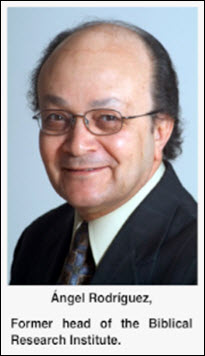 the General Conference Church Headquarters. She met once with Vice-President Orville Parchment and once with Dr. Angel Rodriguez, head of the Biblical Research Institute. Each man had already been supplied with material from the Grace Amadon Collection as well as copies of the Advent Research Committee’s report and copies of The Great Calendar Controversy. She appealed to the church to reopen an investigation into the subject.
the General Conference Church Headquarters. She met once with Vice-President Orville Parchment and once with Dr. Angel Rodriguez, head of the Biblical Research Institute. Each man had already been supplied with material from the Grace Amadon Collection as well as copies of the Advent Research Committee’s report and copies of The Great Calendar Controversy. She appealed to the church to reopen an investigation into the subject.
- Total silence. Despite letters actively requesting feedback on the subject, there was never a response.
- Casual dismissal of the topic. On August 8, 2008, increasing agitation of the subject led the church to issue its first address of the subject. The response, which was printed in “The Review,” did not address the problem of the crucifixion date, the historical evidence which refutes the assumption of a continuous weekly cycle, or any of the Biblical evidence in favor of the original Hebrew lunar Sabbath. It was more of a, “because-of-my-authority-just-take-my-word-for-it-it’s-wrong,” response.
- Recital of assumptions by well-respected scholars. Church scholars such as Jacques Doukhan and Ron Du Preez have been asked to write some material on the subject of the annual Feast Days, with references to the lunar Sabbath. Unfortunately, these simply reiterate the fact that Ellen White believed in a Saturday Sabbath; the week has come down uninterrupted since Creation, etc., etc. They still do not address the evidence proffered in support of the lunar Sabbath or resolve the problem of the crucifixion date. Thus, the church has not, to date, disproven the lunar Sabbath from Scripture as it has been repeatedly asked to do.
- Disfellowship of members who believe in using the Biblical lunar calendar to determine when the Sabbath comes.
- Cease to believe in the lunar Sabbath and agree to the traditional Adventist understanding that Saturday is the true Sabbath;
- Withdraw their membership;
- Be disfellowshiped.
When the women protested that they had never received an answer when they sought to lay the subject before the brethren and, furthermore, had never been shown their error from Scripture, Folkenberg replied that he was not there to discuss the subject. He only wanted to know which of the three options they wished to pursue.
The Vornholts then asked on what grounds they were being disfellowshipped as they still believed the fundamental S.D.A. beliefs. Furthermore, they pointed out that nothing in the Church Manual, the baptismal vows, or the Twenty-eight Fundamental Beliefs specified that the Gregorian calendar must calculate the Sabbath; or, that Saturday is the Sabbath, or that the Hebrew calendar could not be used for calculating the Sabbath. Without this clarified, on what grounds were they being disfellowshipped?
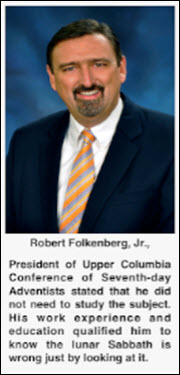 urthermore, they refused to return to worship on Saturday since none of the brethren before whom they had attempted to lay the subject had ever responded, let alone showed them their error.
urthermore, they refused to return to worship on Saturday since none of the brethren before whom they had attempted to lay the subject had ever responded, let alone showed them their error.Either 1844 is not the ending year of the 2300 day/year prophecy;
OR
AD 31 is not the year of the crucifixion;
OR
Saturday is not the Biblical Sabbath;
AND
[ ALL THREE ARE LIKELY INCORRECT IN EITHER TIME OR APPLICATION].
You cannot have all three calculated by two different calendars. Intellectual honesty demands consistency.
“When a man who is honestly mistakenhears or sees the truth,he will either quit being mistaken or cease to be honest.”~ Richard Humpal, J.D., Conviction vs. Preference ~
It would be well for all to heed the warning penned over 100 years ago:
Those who cling to old customs and hoary errors have lost sight of the fact that light is ever increasing upon the path of all who follow Christ; truth is constantly unfolding to the people of God. We must be continually advancing if we are following our Leader. It is when we walk in the light that shines upon us, obeying the truth that is open to our understanding, that we receive greater light. We cannot be excusable in accepting only the light which our fathers had one hundred years ago. If our God-fearing fathers had seen what we see, and heard what we hear, they would have accepted the light, and walked in it. If we desire to imitate their faithfulness stan smith nuud women black and blue jordan shoes – IetpShops – Adidas AdiFC Orlando Pirates, we must receive the truths open to us, as they received those presented to them; we must do as they would have done, had they lived in our day. 38
Cowardice asks the question: Is it safe?Expediency asks the question: Is it politic?Vanity asks the question: Is it popular?But conscience asks the question: Is it right?And there comes a time when one must take a positionthat is neither safe, nor politic, nor popular,but one must take it simply because it is right.~ Martin Luther King, Jr. ~ |
1 Names have been withheld upon request.
2 See Midnight Cry, April 27, 1843, p. 30; Signs of the Times, June 21, 1843, p. 123; Dec. 5, 1843, pp. 133-136; Midnight Cry, Feb. 22, 1844, pp. 243, 244.
3 Bold in original; italics supplied.
4 Grace Amadon, Millerite Computation of the October 22 Date, Box 2, Folder 4, Grace Amadon Collection, Center for Adventist Research, Andrews University.
5 Amadon, Courageous Action of Millerites on Jewish Calendar Problem, Box 2, Folder 4, Grace Amadon Collection, p. 3, emphasis original.
6 S. Bliss, Analysis of Sacred Chronology, pp. 5-6, emphasis supplied.
7 See History of the Sabbath , page 31 and footnote 33.
8 A. T. Jones letter to Claude Holmes, May 12, 1921, emphasis supplied.
9 Ibid. , underlining original.
10 Wierts, letter to L. E. Froom, June 29, 1945.
11 M. L. Andreasen, undated letter to Grace Amadon, Grace Amadon Collection, Box 2, Folder 4, Center for Adventist Research, Andrews University, emphasis supplied.
12 Ibid.
13 Ibid., pp. 3 & 5, emphasis supplied.
14 Ibid., emphasis supplied.
15 Scroll down to page 30.
16 J. H. Wierts, letter to L. E. Froom, June 29, 1945, Grace Amadon Collection, Box 5, Folder 9.
17 Ibid. , p. 1.
18 Ibid.
19 D. E. Rebok, letter to Glen H. Draper, dated February 26, 1946.
20 Glen Draper, letter to D. E. Rebok, February 27, 1946, emphasis supplied.
21 Rebok, letter to Draper, March 1, 1946.
22 Draper, letter to Rebok, March 5, 1946, emphasis supplied.
23 Wierts, letter to Froom, June 29, 1945.
24 Ibid., pp. 1-2, emphasis in original.
25 Ibid., emphasis supplied.
26 Ibid. emphasis original.
27 Ibid. , p. 3.
28 Ibid., p. 5, emphasis supplied.
29 Ibid., p. 6, emphasis original.
30 Siefried H. Horn, Lynn H. Wood, Chronology of Ezra 7, preface.
31 Ibid., Conclusions.
32 See http://biblicalresearch.gc.adventist.org/aboutus.htm .
33 E-mail exchange dated January and February, 2007.
34 See Sabbath Keeping, Seventh-day Adventist Church Manual, pp. 138-139, http://www.adventist.org/ChurchManual_2010.pdf .
35 See Baptismal Vows, Seventh-day Adventist Church Manual , pp. 46-47, http://www.adventist.org/ChurchManual_2010.pdf .
36 See Twenty-eight Fundamental Beliefs , http://www.adventist.org/beliefs/fundamental/ . Scroll down to Sabbath, #20.
37 Recorded meeting with Elder Robert Folkenberg, Jr., Spokane, Washington, 2010.
38 Ellen G. White, Historical Sketches, p. 197.
